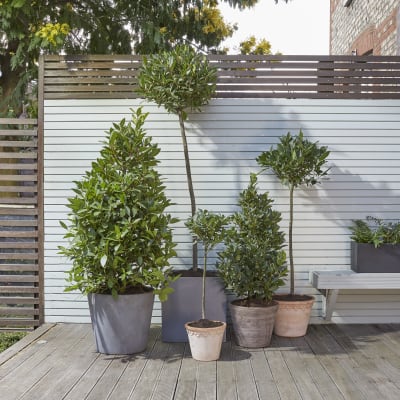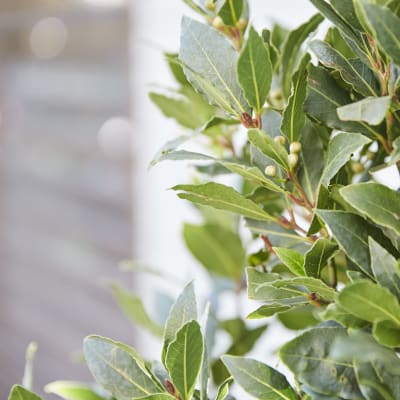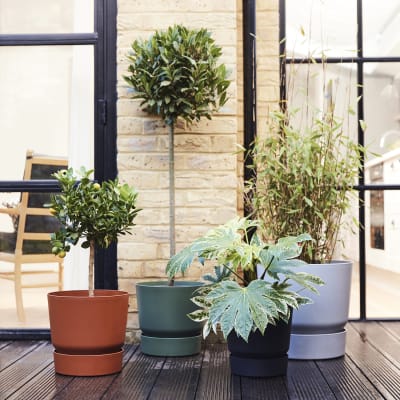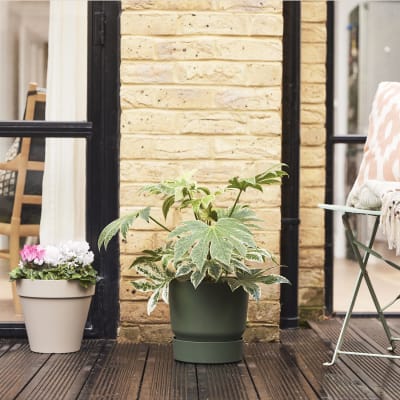

From £35.00


From £35.00
Out of stock
See optionsWe’re no stranger to storms, snow, and the occasional heatwave here. Your outdoor plants will have to face these elements head on, so take some time to figure out what you can do to protect them.
Cold weather is probably the one you’ll need to deal with most often. Firstly, get ahead of the problem by choosing frost-proof containers for your plants, as cold weather can cause certain materials to crack.
You can also consider bringing your plants inside when cold weather is forecast; just keep in mind that many outdoor plants will be equally unhappy in a toasty home, so a garage, shed, or greenhouse is a much better option. Anywhere sheltered but unheated, basically.
If this isn’t an option you can protect your delicate plants with some bubble wrap. Just wrap it around the plant pot, raising it up to cover the top of the soil if possible. This insulates the plant and protects the soil from going through frequent periods of freezing and thawing.
When you’re potting your plants, even if it’s months before any cold weather, you can also include a layer of bubble wrap on the inside of the pot in anticipation.
During a heatwave, keeping an eye on the soil is essential, as the hot sun may dry out your compost more quickly. Otherwise hot weather shouldn’t bother your plants too much, provided they’re in a suitable space - shade-lovers shouldn’t be in direct sun, for example.
Storms can wreak havoc on your outdoor plants, who aren’t used to putting up with quite that level of wind and rain. If you can’t bring them indoors, it’s worth creating a barrier between your plant and the elements by covering them with upside down plant pots, buckets or cloches.


From £6.00
Out of stock
See options

From £25.00
Out of stock
See options
Free standard delivery on orders over £50
Need to get in touch?
Just use the help widget to send a message to the team.
Customer service opening hours:
Monday to Sunday 9am-8pm
Live chat is available 10am-5pm Monday to Friday
Secure payment - our systems are protected with bank-grade security. Your payment is safe with us.
We work directly with over 40 specialist growers to bring you the best quality plants
If you need advice, just get in touch - we’ll be your personal plant gurus as long as you need us. If something’s up, tell us within 30 days of delivery — we’ll sort it.
We usecookiesto improve your experience on our site.